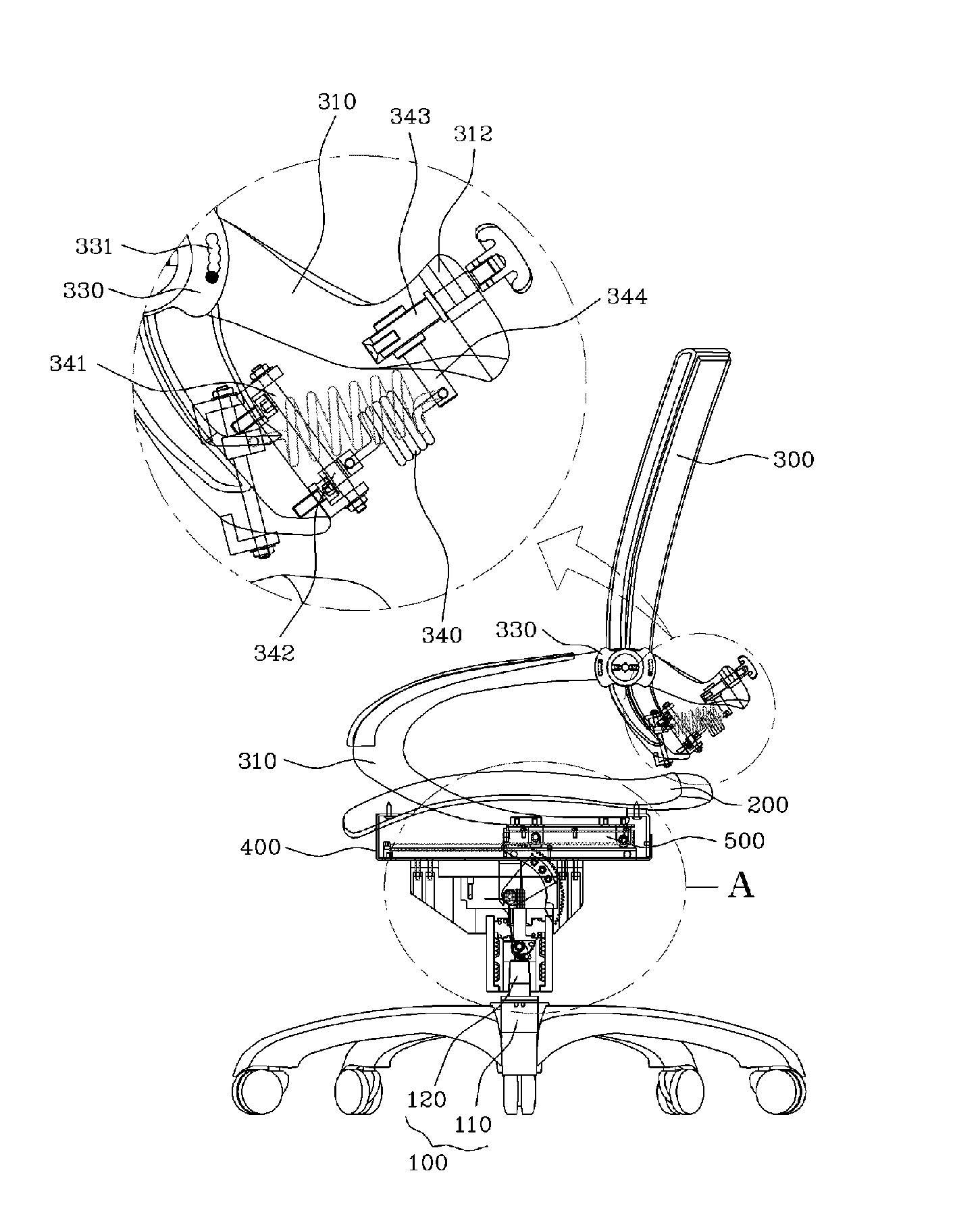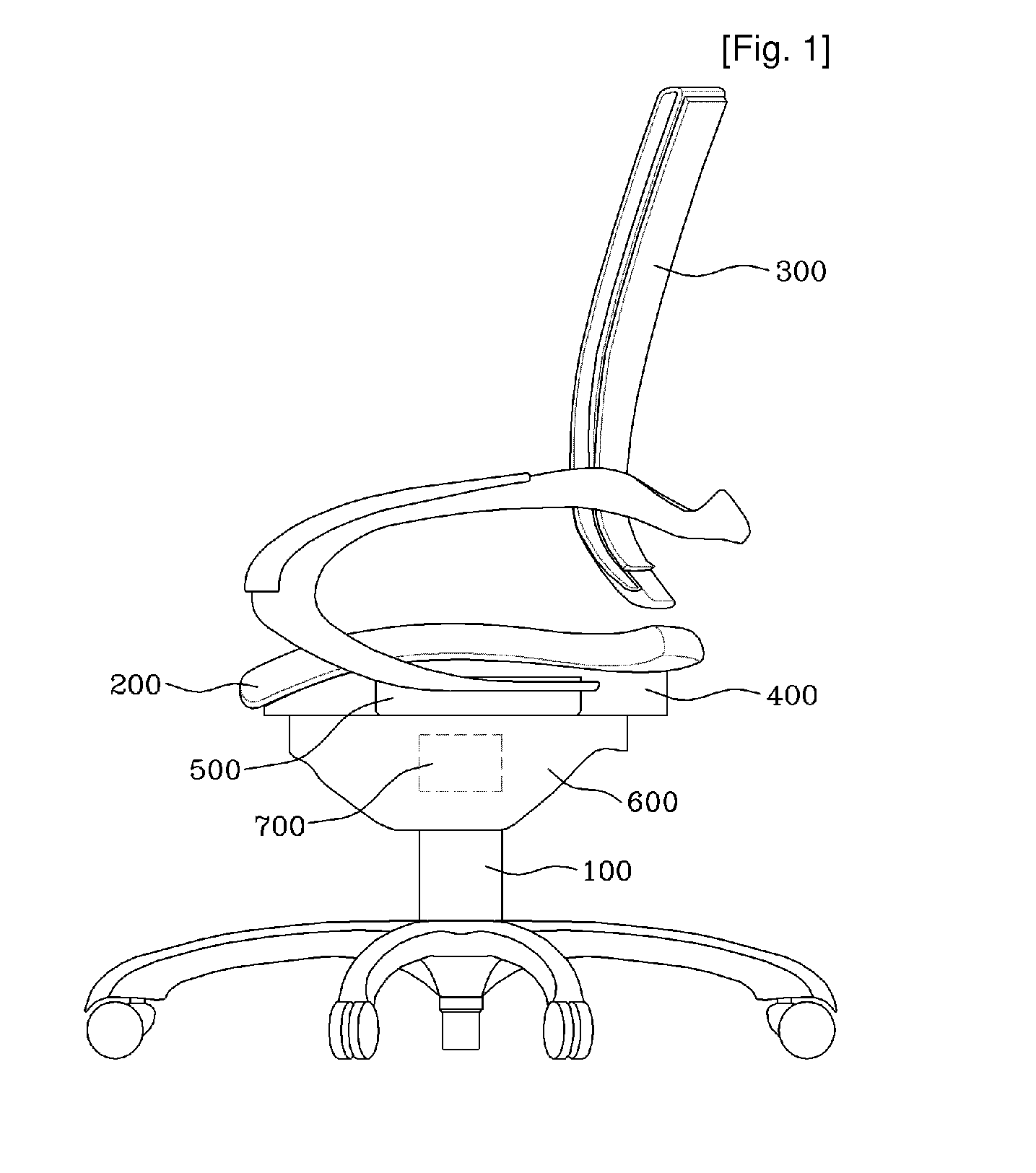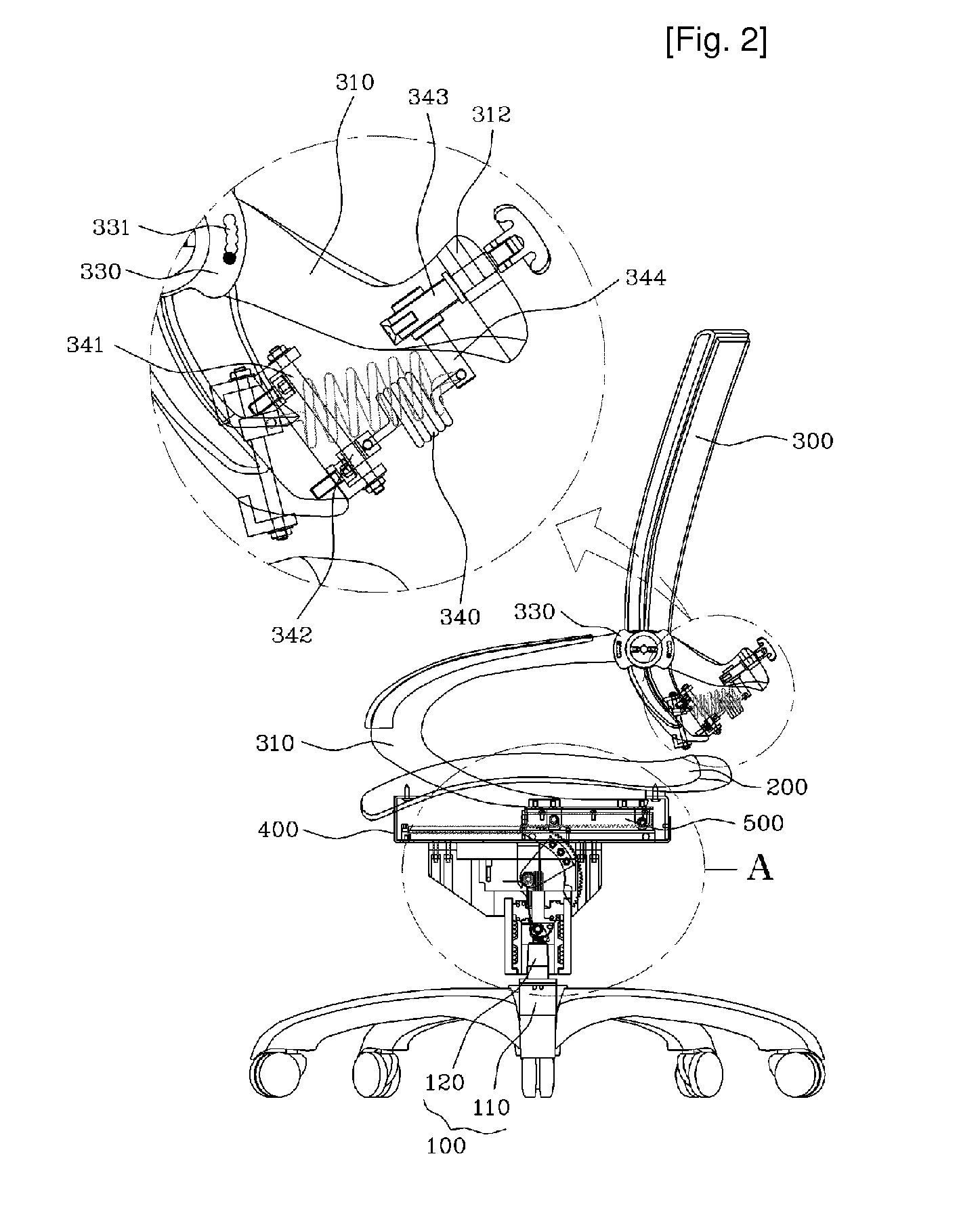Chair with automatically movable back support
a back support and automatic technology, applied in the field of chairs, can solve the problems of increased fatigue of users, serious influence on the spine, intervertebral disc hernia, etc., and achieve the effects of preventing spinal and musculoskeletal disorders, reducing the cost of storing and moving the chair, and improving convenien
- Summary
- Abstract
- Description
- Claims
- Application Information
AI Technical Summary
Benefits of technology
Problems solved by technology
Method used
Image
Examples
third embodiment
[0085]Hereafter, the chair with an automatically movable back according to the present invention will be described below with reference to FIGS. 2 through 8. FIG. 6 is a front view illustrating a connection shaft, FIG. 7 is a view illustrating the assembled state of an angle adjustment lever, and FIG. 8 is a front view of the angle adjustment lever.
[0086]As can be seen from these drawings, the third embodiment of the present invention is characterized in that, in addition to the horizontal movement of the back 300 and the horizontal movement frame 500, the back 300 can be rotated to enable adjustment of the angle of the back 300.
[0087]In this embodiment, the back 300 of the chair is coupled to the left and right portions of the back frame 310, which is connected with the horizontal movement frame 500 or the tilting frame 820, by means of connection shafts 320 to form a rotatable structure. The connection shafts 320 provide the rotation center of the back 300. In the chair according ...
fourth embodiment
[0101]Hereafter, a chair in accordance with the present invention will be described.
[0102]FIG. 9 is an exploded perspective view illustrating the main parts of a chair in accordance with a fourth embodiment of the present invention, and FIG. 10 is a sectional view illustrating the main parts in an assembled state.
[0103]In the present embodiment, as in the aforementioned embodiment, when a user sits on a seat 200, the back of the chair is moved to be brought into contact with the back of the user. In this regard, the detailed construction of the present embodiment is slightly different from that of the aforementioned embodiments.
[0104]The chair according to this fourth embodiment has, as its main component elements, a base frame 400, a horizontal movement frame 500, a connection housing 900, elastic members ‘S’, and rotation force generation means 700. Specifically, in the present embodiment, as the base frame 400 is moved upwards and downwards relative to the connection housing 900,...
fifth embodiment
[0114]Finally, the present invention will be described. FIG. 11 is a sectional view illustrating a fifth embodiment of the present invention.
[0115]In this embodiment, even though a chair is constructed to have the same construction as the fourth embodiment, when connecting the connection housing 900 to the support 100, a connection bracket 1000 is used as an additional element. The connection bracket 1000 is positioned below the connection housing 900. The connection bracket 1000 is fixed to the support 100, and the connection housing 900 is rotatably connected to the connection bracket 1000. An angle adjustment elastic member 1100 is provided to the connection bracket 1000, and the connection housing 900 is connected to the angle adjustment elastic member 1100. As shown in the drawing, the connection housing 900 can be inclined rearwards with respect to the connection bracket 1000 within a predetermined range, to improve convenience in a situation such as when a user takes a rest.
[...
PUM
 Login to View More
Login to View More Abstract
Description
Claims
Application Information
 Login to View More
Login to View More - R&D
- Intellectual Property
- Life Sciences
- Materials
- Tech Scout
- Unparalleled Data Quality
- Higher Quality Content
- 60% Fewer Hallucinations
Browse by: Latest US Patents, China's latest patents, Technical Efficacy Thesaurus, Application Domain, Technology Topic, Popular Technical Reports.
© 2025 PatSnap. All rights reserved.Legal|Privacy policy|Modern Slavery Act Transparency Statement|Sitemap|About US| Contact US: help@patsnap.com



